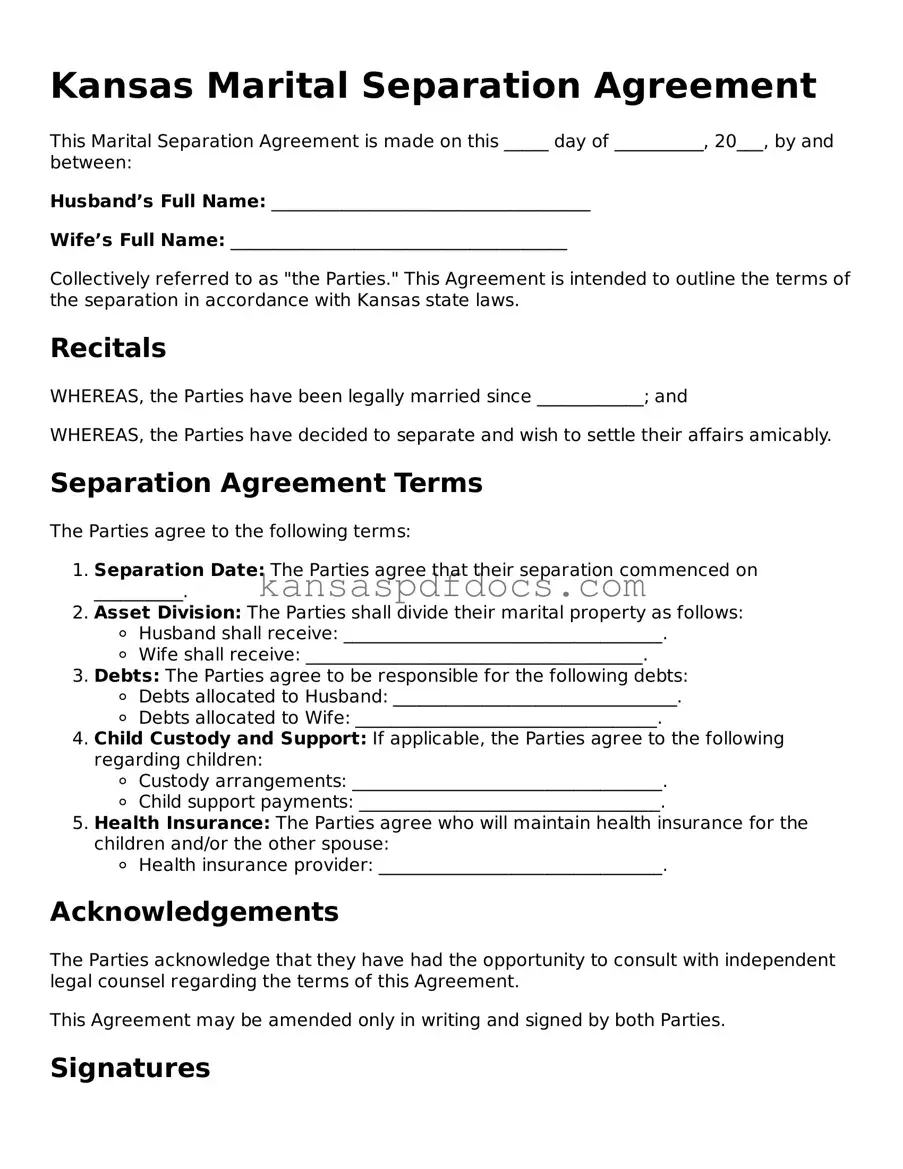Valid Marital Separation Agreement Template for Kansas State
The Kansas Marital Separation Agreement is a legal document that outlines the terms of a couple's separation, detailing the rights and responsibilities of each party. This agreement can address issues such as property division, child custody, and support obligations. By formalizing these arrangements, couples can ensure clarity and reduce potential conflicts during the separation process.
Access This Form Now
